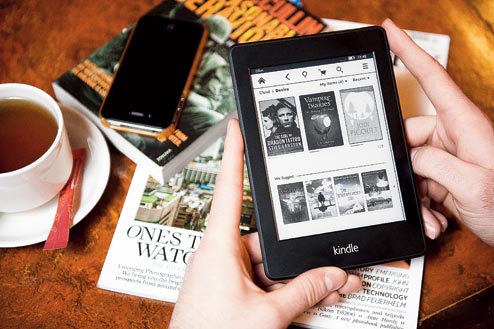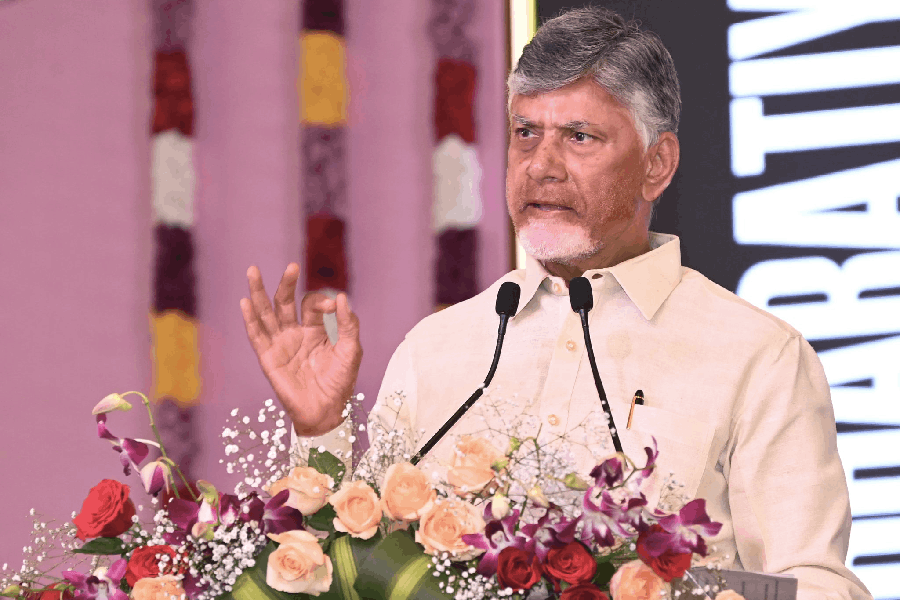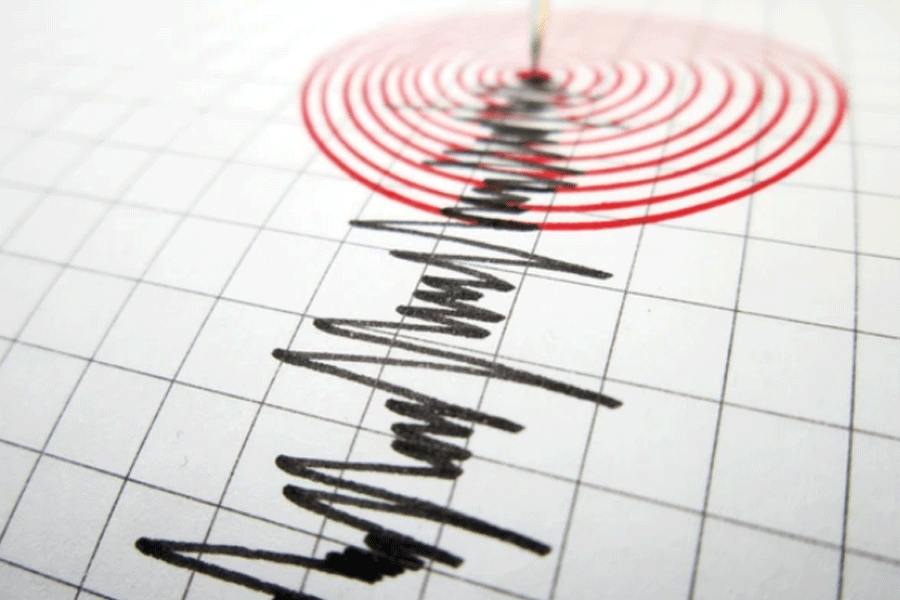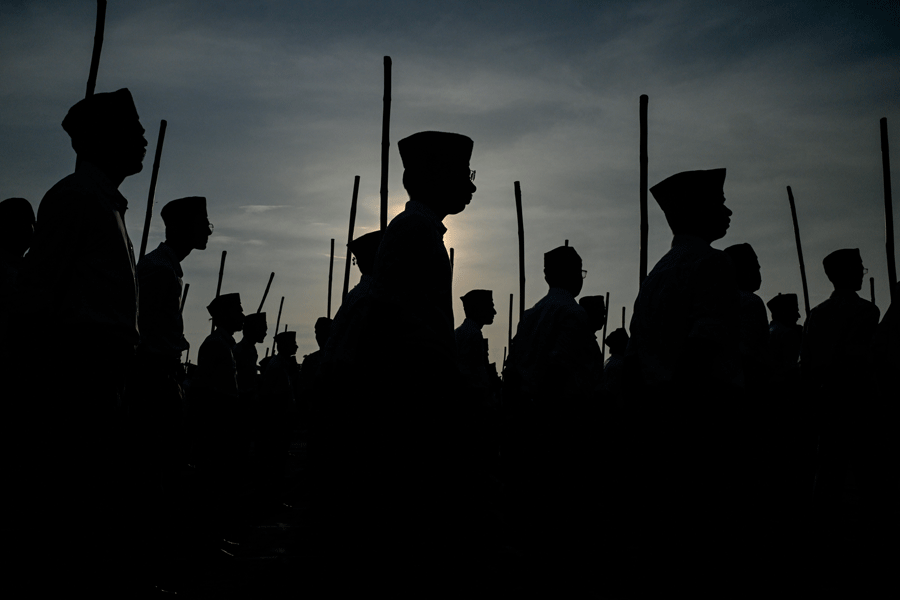

November 19, 2007
Amazon introduces Kindle and The New York Times goes on a rant: “You’ve got to have a lot of nerve to introduce an electronic book reader in 2007. Sure, the idea has appeal: An e-reader lets you carry hundreds of books, search or jump to any spot in the text and bump up the type size when your eyes get tired. But the counterarguments are equally persuasive. Printed books are dirt cheap, never run out of power and survive drops, spills and being run over. And their file format will still be readable 200 years from now…. Are they completely nuts?”
The $399 price tag may have made this Christmas-list item seem nuts (many customers gave the device a one-star rating), but in the next few months it sold more than a quarter million units. Holding Amazon back was the small pool of book titles that were available in digital form… only 88,000 Kindle e-books were available at launch.
May 30, 2008
Simon & Schuster issues a statement to make 5,000 additional titles available for Kindle by the end of 2008. Kindle customers were now able to read bestsellers such as Stephen R. Covey’s The 7 Habits of Highly Effective People. Meanwhile, data in the public domain suggest that people were reading e-books 2.6 times as much after their Kindle device purchase.

February 10, 2009
Kindle 2 is announced. It hit the market at a time when electronic books generated less than one per cent of the $25 billion US book publishing market. At its launch, Kindle 2 got the promotion it needed from author Stephen King, who had read an excerpt from Ur, a novella he wrote at Amazon’s request. A month later, Stephen Fry made an insightful observation about the growing e-book versus book debate: “This is the point. One technology doesn’t replace another, it complements. Books are no more threatened by Kindle than stairs by elevators.”
October 7, 2009
Amazon announces Kindle 2 International, which was made available in India. It allowed wireless download of books. The device, complete with custom duty, was priced around Rs 17,000. A few days later, the company introduces Kindle for PC, an application for reading and managing Kindle e-books on the Windows computer.
July 2010
It is revealed that James Patterson had sold almost 870,000 Kindle e-books, while Nora Roberts, Charlaine Harris and Stephenie Meyer each had sold more than 500,000 books in Kindle format. On July 27, Stieg Larsson became the first author to sell over one million Kindle books.
August 27, 2010
Kindle 3 or Kindle Keyboard arrives. And it was a shot at the recently launched (April 3, 2010) iPad. Here was a device that was everything the iPad wasn’t — small, light and inexpensive. According to Washington Post, in five months, the Kindle 3 shot to the top of Amazon’s bestseller list, unseating the last book of the popular Harry Potter series, Harry Potter and the Deathly Hallows.
September 28, 2011
Kindle 4 is remembered for being the first member in its family without a full-size keyboard. It had five buttons and a cursor pad, besides being cheaper, lighter and smaller. But it didn’t support audiobooks, nor did it have a headphone jack or built-in speakers.
November 15, 2011
Kindle Touch was an important milestone. Available in two versions — one with Wi-Fi and the other 3G with Wi-Fi, it had two tactile buttons (power and home) while everything else happened on the touchscreen. It was the first model to feature X-ray for looking up details of characters and themes.
August 28, 2012
Amazon reveals that Kindle-exclusive books have been downloaded more than 100 million times. Also, by this time there were over 180,000 Kindle-exclusive e-books which were absent on any other e-book platform.
October 1, 2012
Kindle Paperwhite proves to be a game changer. A higher-resolution and full touchscreen is married to LED lights, which means one could use the device in the dark (without a lamp). Jeff Bezos announces to a crowd in California: “We want to make money when people use our devices, not when they buy our devices.”
October 21, 2014
Kindle Voyage starts shipping. Priced at $200, it was meant for serious readers. It was like buying a hardcover edition of a book. The New York Times wrote: “If you look at the new Kindle for any stretch of time, you don’t just forget that you’re reading an e-book; you forget that you’re using any kind of electronic device at all.”
June 30, 2015
Kindle Paperwhite 3 arrives. It’s Amazon’s first e-reader to feature the Bookerly font, which is “inspired by the artistry of the best fonts in modern print books”.
July 7, 2016
Kindle 8 is here. Thinner and lighter, its main feature is the VoiceView, which activates via the built-in Bluetooth audio. The same month Kindle Singles Classics is also released, which are carefully selected original works (originally published in magazines like The New Yorker, Rolling Stone, Esquire and Playboy) ranging in page length between 5,000 and 30,000 words.
October 31, 2017
Waterproof Kindle Oasis 2 is announced; it can survive a shower but not scuba diving. It can last up to an hour in about two metres of fresh water. The device which celebrates 10 years of Amazon’s Kindle journey has a 7inch screen and 300ppi screen density, meaning around 30 per cent more words can fit into the screen per page. The big feature is the integration of Amazon’s Audible audiobook service, which allows “readers to seamlessly switch between audiobooks and e-books”.
Jobs vs Bezos
It doesn’t matter how good or bad the product is, the fact is that people don’t read anymore. Forty per cent of the people in the US read one book or less last year. The whole conception is flawed at the top because people don’t read anymore.
Steve Jobs on Kindle, Wired (2008)
I believe that reading deserves a dedicated device. For people who are readers, reading is important to them. And you don’t want to read for three hours on a backlit LCD screen. It’s great for short form. This is a really important point — that we humans co-evolve with our tools. We change the tools, and the tools change us, and that cycle repeats.
— Jeff Bezos to Newsweek (2009)
Kindle is my reading companion because.... Tell t2@abp.in











